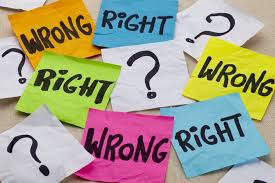In sales, marketing, and customer service, omnichannel, aims to give customers a seamless, unified brand experience regardless of the channel they use. On the back end, the organization’s distribution, promotion, and communication channels work well together. This makes sure that customers have a smooth and consistent shopping experience, whether they buy online from a desktop or mobile device, over the phone, or in a store. This article tells you everything you need to know about omnichannel marketing, including its strategy and how to use it.
What Is Omnichannel
A business must be omnichannel if it wants to offer the same functionality and experience across all channels, no matter how a customer chooses to interact with it. At each stage of the customer journey, including discovery, research, purchase, support, customer service, returns, and developing a long-term relationship, businesses must pay close attention. In a nutshell, omnichannel means meeting customers wherever they are and giving them better service at every point of contact, such as:
- conventional stores
- through telephone
- Identified websites
- Internet stores like Shopify and Amazon
- mobile applications
- Push notifications, conversations, and mobile messaging
- the internet
- Catalogs sent via email and other mail-order methods
Benefit of Omnichannel
What do omnichannel business goals and operations mean? When companies use a cross-channel strategy, they get five main benefits, from better inventory management to more satisfied customers.
#1. Consumer Expectations
According to a recent McKinsey & Co. omnichannel survey, 41% of CEOs cite e-commerce as their most successful sales channel, outpacing in-person (37%), video (31%), and mobile (29%). Furthermore, just 15% of business-to-business (B2B) sellers believe in-person interactions with clients will become standard in the future, despite the fact that almost all respondents said they will be able to do so by the beginning of 2022.
#2. Flexible Pricing
American Express says that many buyers value quality over price and will pay 17% more for an item from a seller who is known for having great customer service. This means that companies can make judgments and offer high-quality goods and services without worrying too much about the associated costs. It presents a range of intriguing opportunities for original pricing tactics.
#3. Communicate Stock Information Across Channels
Because omnichannel systems share stock information across channels, inventory is less likely to sit around and not sell. Storage and opportunity expenses are reduced as a result. Retailers like Coach, Kohl’s, Best Buy, Sears, Macy’s, and Walmart use the “endless aisle” concept, which is one of the best applications of cross-channel inventory management. These businesses enable customers to browse internet inventories while shopping in-store and have things delivered or made available for pick-up at another location.
#4. Gains in Income
According to Qualtrics research, spending money on improving the customer experience can increase profitability by as much as $700 million annually for businesses with $1 billion in annual revenue. Enhancing customer experiences can boost income through the use of an omnichannel strategy.
What Is Omnichannel Strategy
With the help of an omnichannel strategy, you can give customers a smooth experience across all of your marketing channels. It covers every physical and digital touch point for your company, from a point of sale to an Instagram shoppable post, and it’s not just for stores anymore.
If a company wants to stay relevant, it needs to make sure that the brand experience is the same across all sales and marketing channels, whether they are digital, physical, both, or neither. Connecting your offline and online presence is required. In this case, an effective omnichannel strategy can be useful.
According to Square’s head of eCommerce, David Rusenko, the requirements for a successful omnichannel strategy haven’t changed, but consumer expectations have.
Omnichannel Strategy Steps
#1. Identify Your Target Audience.
The first step in making a successful omnichannel retail or restaurant strategy is to know your customers and how they buy from you.
#2. Provide WiFi in-Store at Your Actual Location.
Consumers are doing more and more product research on their own while they are in stores and restaurants. In order to guide these customers through their purchasing processes, provide in-store Wi-Fi.
#3. Expand Your Sales Channels.
You should sell and market your products wherever your customers go to look around, shop, or just get more information. Most shoppers move between a variety of touchpoints before making a purchase.
#4. Produce Educational Material.
High-quality, interesting content is important for educating customers, responding to questions, and building trust across channels.
Make an effort to include social media into your in-person experience.
Displays in dressing rooms that allow customers to read product reviews of the items they are putting on are a useful addition to other try-before-you-buy strategies.
#6. Provide No-Cost in-Store Pickup.
Consumers prefer to save money on shipping, especially millennials. Consider making your storefront a fulfillment center for your online channels so that customers can pick up their orders without having to pay for shipping.
#7. Make Use of Your Knowledge
With omnichannel, small businesses have an advantage. Since you’re a native, you probably know a ton about your products and industry.
What Is Omnichannel Marketing
Omnichannel marketing combines and works with the different ways that companies communicate with customers so that the marketing experience is consistent. This includes both physical (like stores) and digital outlets (e.g., websites). An omnichannel marketing approach aims to give customers a clear, simple, and seamless experience that gives them many ways to be happy. Consumers can use an omnichannel strategy to find and buy things online, offline, or through a combination of both, such as “buy online and pick up in-store.” Businesses use omnichannel strategies in many fields today, such as healthcare, retail, finance, technology, and others.
Thanks to online channels, customers today have more options than ever and require up-to-date information. They can communicate with brands via omnichannel marketing, which enhances the general customer experience.
Omnichannel marketing is the seamless integration of branding, message, and online and offline touchpoints as a customer moves through the sales funnel. This gives the customer a more meaningful experience.
In omnichannel marketing, marketing techniques are viewed from the perspective of the consumer. Consumers can now talk to brands through many different channels, such as social media and phone numbers for customer service. An omnichannel strategy makes sure that the customer has a good, consistent experience across all channels. It does this by providing a few key things:
- Brand voice and vision that is easily understood and consistent
- customized communication based on preferences
- knowledge of the buyer’s journey at the time of the contract and past interactions
Consumers are more likely to recognize a brand when it is well-known, and the likelihood that they will interact with branded content across channels rises when it is personalized based on their interests and purchasing patterns.
Omnichannel Marketing Examples
Take inspiration from the following brands while developing your omnichannel marketing strategy:
#1. Starbucks
With its mobile rewards program, Starbucks is able to better connect the mobile experience with the in-store experience and put customer convenience first. Using their phone or desktop computer, users can reload their cards.
#2. Walgreens
Walgreens has made an app for smartphones that lets customers pick up their renewed prescriptions in the store. Their app makes it easier for customers to decide which store to go to, and it also shows items that are sold in each store.
#3. Timberland
By using near-field communication (NFC) technology, Timberland is combining the convenience of the internet with the in-person customer experience. Touchwalls were put up in their store to lead customers to more information about their shoes.
What Is Multichannel vs Omnichannel?
The main difference is that although omnichannel uses all available content channels, multichannel just uses a small subset of them. Multichannel and omnichannel are both defined as having “many channels” and “all channels,” respectively. Consider omnichannel as covering every stage of your customer’s journey, whereas multichannel focuses on a single point A to point B.
Also, whereas omnichannel emphasizes comprehension and a smooth experience for your clients, multichannel places more of an emphasis on interaction within the various channels.
The availability of your products in stores is a different factor to think about. The distribution of goods over various channels, such as selling products both online and in physical stores, is known as multichannel marketing. Nevertheless, omnichannel goes a step further by taking customer wants into account and interacting with them through all channels accessible, wherever they are. For example, instead of making customers go to a store, it could involve putting ads in streaming experiences that people do at home. Multichannel is a straight line, while omnichannel has a more fluid or circular path from the brand to the customer.
How Does Omnichannel Work?
Even though omnichannel support has a lot of moving parts, it works as a single, coordinated operation. Each point of contact should offer a unique experience that builds on what came before and moves the client closer to the goal.
Think of a homeowner who wants to change the kitchen faucet. After seeing a TV ad for a stylish and useful item, the customer looks for the product on his laptop. He finds the manufacturer’s website and sees that it has a feature called “merchant finder,” which shows that the model he wants is available at a nearby plumbing supply store. He emails his partner a link to the product page, who uses a tablet to do some research, speaks with a customer service agent at the manufacturer, and then adds the item to their shopping basket at the retailer’s website.
The homeowners download the retailer’s app and access the cart on a smartphone as they travel to the store because they want to see the item in person before making a purchase. When customers get there, they use the app to see if the item is still in stock, how many are left, and where they can locate a demo model. The customer would then ideally be able to transfer the cart from the phone to the POS system via a QR code or near-field technology, finalize the sale, and take the item home.
How Do You Create an OmniChannel Strategy?
The following are steps to create an omnichannel strategy:
- Be specific about who you want to reach: You should start with customer personas before considering channels and execution tactics for your omnichannel approach. Who is your intended audience? Where do they spend their time? What are they concerned with?
- Change the way you do business: Changing to an omnichannel marketing strategy may need some adjustment. For more established brands in particular, considerable innovation of current processes will be necessary.
- Choose your marketing channels: It’s not omnichannel marketing if you publish the same content across all channels. Customers should receive the same quality of service whether they are reading your website, looking around your store, or getting in touch with you through social media.
- Develop your internet brand: You must be in charge of how your brand is perceived. This must be the same across all platforms. Your website copy must be personable and conversational, much like your social media character.
- Purchase the appropriate tools: Your procedures and infrastructure should be equipped to handle the omnichannel strategy. Tools that can distribute client information across various channels will be necessary.
- Make providing for customers a primary priority: To other people, people react better. Because of this, it’s critical to develop your brand as a relatable, current character that is aware of the needs and desires of its target market rather than as a faceless corporation.
Conclusion
By using omnichannel, retailers who want to stay ahead of the curve can make more products available, drive more traffic and sales, and connect all of their customer touchpoints. The many advantages of omnichannel marketing and commerce will still be available to support the expansion of your company.
An omnichannel approach to retail and commerce will enhance the shopping experience for your customers and offer more options for online, in-store, and mobile transactions.
Related Articles
- OMNICHANNEL MARKETING: Definition, Tips, & Examples
- EMAIL PROTECTION: Why Is It Important
- How Does A Multichannel Outreach Bolster Your Sales?
- BLACK FRIDAY STORE HOURS IN 2022: How Long Will It Last
- DIGITAL MARKETING CHANNELS: Most Effective Digital Marketing Channels for Your Business)






